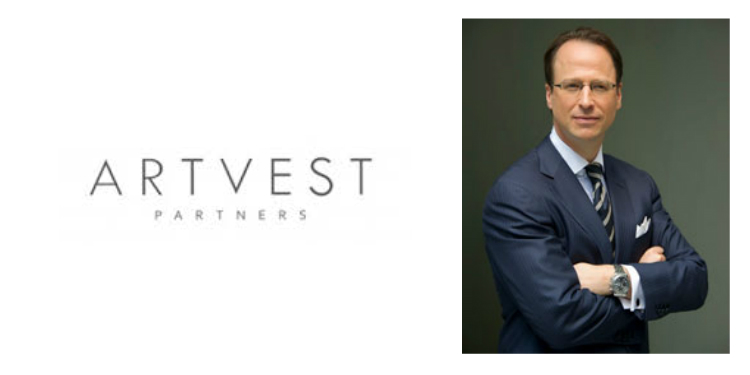Artvest: Renaissance Advisors

Jeff Rabin at Artvest Partners
Advisors. Analysts. Art show organisers. Finance arrangers.
Because they offer such a range of services, it is hard to define exactly what Artvest‘s founders, Jeff Rabin and Michael Plummer, do. In an age when many people specialise, they thrive on advising a wide-range of clients on many different matters.
“We do everything from buying and selling, to strategic advice to financing against works through third parties,” says Rabin.
Both Plummer and Rabin worked at Christie’s in the Financial Services department before launching Artvest in 2009. Rabin says that this financial focus gives them a unique viewpoint: “The art market is opaque, illiquid and unregulated and much expertise, due diligence and care is needed.”
Artvest’s clients are also hard to define. They vary from private collectors to Fortune 500 companies. They also advise banks and investors. In 2013 they analysed Sotheby’s stock for Citibank Research. It compared Sotheby’s to Christie’s and much of its analysis ended up in the recent shareholder activism in Sotheby’s.
They also work with institutions and foundations – often advising on how to sell work in a measured way to avoid lowering values. It advised the Detroit Institute of Arts and the City of Detroit in their bankruptcy proceedings.
Private Art Investor caught up with Mr. Rabin in March 2015.
Private Art Investor: How should clients choose works?
Rabin: “We tell our clients that if you are buying art as a financial investment it is crucial that you ensure that your portfolio is diversified and is liquid enough so that it can survive a downturn. The last thing you want is to have to sell part of your collection, because liquidity goes away in a downturn and the risk of not being able to sell increases significantly. Often there can be no market for some of these objects.
If you look at the big contemporary auctions at the major auction houses you realize that only approximately 300 artists are represented throughout the year. Yet galleries and art fairs show a considerably larger number. We encourage clients to think about this as the contemporary sales are just one part of a much bigger market. If you are spending $50,000 on a piece from one of the artists not selling at the mainstream auction houses, you could face liquidity issues when trying to sell the work.”
Private Art Investor: We keep seeing record prices at auctions, is this sustainable?
Rabin: “Looking at the market, it was worth $20 billion in 2002 and according to Clare McAndrew’s TEFAF report this year it is now valued at approximately $65 billion. Although there has been an increase in the amount of objects on the market, it is the value of the property that has really increased, driving the market value up.
Notwithstanding the 2008/2009 pullback, some areas have seen an extraordinary rebound since which has led to the new highs for a number of artists, especially in the contemporary market. The number of objects selling for over $10 million is extraordinary, and every season has gotten larger and larger.
Contemporary art has seen enormous appreciation, with prices often exceeding $50 million.”
Private Art Investor: Is there too much focus on higher value works?
Rabin: “It’s very sexy to talk about the $50 million objects, but it makes the market exclusionary and only represents a small number of the works actually being sold. Works between $50,000 and $2 million are the sweet spot. They cater to liquidity, availability and potential in the market.
The risk may be higher on objects by primary market artists, but you can diversify by buying an established artist’s work in a different media. We see some of our clients investing in works on paper by established artists because they are a fraction of the price but are often studies for the major works.”
Private Art Investor: You also run the Spring Masters New York art fair at the Park Armory Armory each May. The fair is well known for its innovative layout. How important is the design of the show?
Rabin: “We worked with Rafael Viñoly to create a unique hexagon space which encourages people to wander through and happen across art, as it should be. The design coupled with the top quality art on offer from antiquity through contemporary is what differentiates the fair and makes it so successful.
Private Art Investor: Are shows putting galleries out of business?
Rabin: No, but the gallery scene is shrinking considerably as foot traffic in galleries has dropped and is continuing to do so. While the big galleries are getting bigger and the small galleries are surviving, it is the mid-sized galleries that are closing or shrinking. This is partly due to the internet but also due to the rise of the art fair scene and access to a larger customer base in a shorter period of time and at a lower cost. The right art fairs are acting like a multi-day auction, cost effective for the gallery and offering the buyer multiple galleries all in one place.”